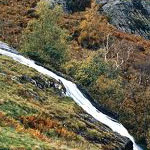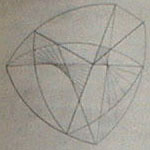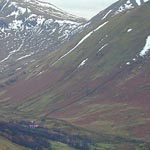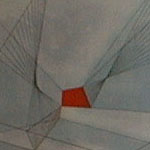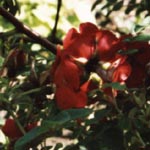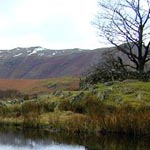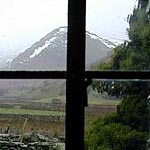[Home]
[Stone and Flower]
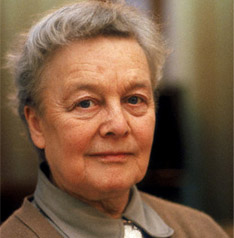
Background
I discovered the poetry of Kathleen Raine through Ian Skelly’s radio feature A Note Struck by the Stars broadcast in 2001. It was a revelation. How had I missed such poetry? I immediately set out to read what I could and soon discovered so much was out of print. A gift of her Autobiographies began unwrapping what so often has felt like the voice of a kindred spirit. In those pages I discovered her connection with Barbara Hepworth. In some sense Stone and Flower chose itself as a focus for musical attention.
When the opportunity came to present Stone and Flower as part of the Hepworth Centenary Exhibitions it was the time and location described in the poetry and the backdrop to Hepworth’s sculpture of that period that engaged me. In the late 1930s both women adopted a rural isolation, balancing the demands of young children with their need to survive financially and develop as artists. Kathleen Raine ‘escaped’ to the remote valley of Martindale near Ullswater in the northern part of the Lake District. She lived for three years with her two children in Martindale vicarage, ‘the most beautiful white house imaginable, stood in its own field, with a great lime tree at the gate and a beck fringed with birch and alder bounding its little domain. It stood empty, waiting for me.’ It was here she wrote her first book of poems, Stone and Flower, subsequently published with drawings by Barbara Hepworth.
[Home]
[Stone and Flower]
The Song Cycle
This is a true song cycle in the tradition that began with Beethoven’s To the Distant Beloved where the opening music returns in the final song, albeit here set to a different text. The seven songs, chosen by the poet Margaret Morgan, counterpoise a period of reflection amongst the grandeur of Wordsworth’s Lakeland with Kathleen Raine’s London life prior and during the Second World War. Songs such as the opening The Fall with its ecstatic observations of nature are set against the wry humour and energy of Far Darting Apollo with its lively references to the Walton & Sitwell Façade. After the heartbreaking farewell of Leaving Martindale, two ‘London’ poems – the declamatory London Revisited and the waltz-like The Sphere – are brought together with a significant group of keyboard interludes to form the long central section of the work. In The Silver Stag the poet sings an elaborate song of love and desire to the man she waited for in Martindale, and who never came. In the final song Tu non se’ in terra, si come tu credi . . . its title and reference to Dante’s Purgatory, we return to the world of the opening poem where the cycle began.
As an introduction to this cycle of poems it is strongly recommended that a reading of Parting, the final poem in the collection Stone and Flower, be performed either by the singer or pre-recorded as ‘the poet’s voice’ as it was at the premiere. This long coda to Raine’s collection provides a key to unlocking the personal circumstances that surround Stone and Flower, circumstances repeated twenty years later in her tragic affair with the writer Gavin Maxwell.
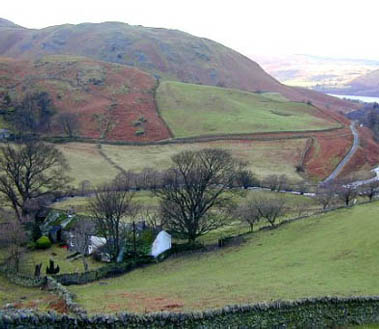
Raine’s Martindale, photograph by Margaret Morgan
[Home]
[Stone and Flower]
Performance
The accompaniment is scored for the somewhat unusual medium of an electric piano, ideally one having a Fender Rhodes type of velocity-sensitive timbre change where piano is a soft timbre, forte is a hard-edged timbre. There were two good reasons for this choice: much of the composer’s work with voices has used this instrument (BBC commissions Schizophonia and Conversations in Colour); the first performance was to take place in a gallery rather than a recital hall. These reasons should not prevent the use of a conventional acoustic piano, although the electric instrument remains the composer’s preferred choice. Throughout articulations, dynamics and tempo markings should be seen as a guide, no more.
Nigel Morgan has created an electroacoustic treatment of Parting, Katherine Raine’s epilogue to Stone and Flower. This has been played as an intimate introduction to the cycle and for concert performance can include projected images of Martindale and Ullswater by Winifred Nicholson. Listen to The Parting here.
Stone and Flower was written for the mezzo soprano Philippa Reeves and keyboard player Robert Court. The music was commissioned by Yorkshire Sculpture Park with funds from the Britten-Pears Foundation for the Barbara Hepworth Centenary Exhibition and received its first performance on Kathleen Raine’s birthday 14 June 2003.
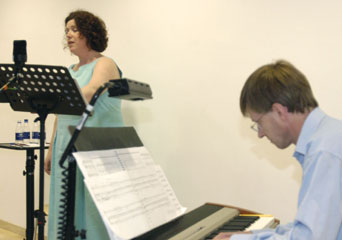
From the premiere of Stone and Flower.
[Home]
[Stone and Flower]
Click on the images below to explore music and text from the seven songs of Stone and Flower:
The Fall
Far Darting Apollo
Leaving Martindale
London Revisited
The Sphere
The Silver Stag
Tu non se’ in terra…
[Home]
[Stone and Flower]
Downloads
Stone and Flower – a song cycle with words by Kathleen Raine (illustrated by Barbara Hepworth) – for mezzo soprano and keyboard [pdf]
-
- 1 –
The Fall
-
- ]
- [
-
- [
- 2 –
Far Darting Apollo
-
- ]
-
- 3 –
Leaving Martindale
-
- ]
- [
-
- 4 –
London Revisited
-
- [
-
- ]
-
- 5 –
The Sphere
-
- [
-
- ]
-
- 6 –
The Silver Stag
-
- [
-
- ]
-
- 7 –
Tu non se’ in terra . . .
-
- [
-
- ]
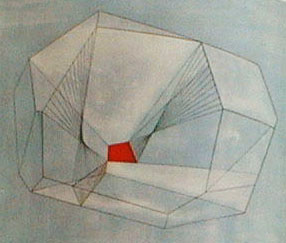
One of Barbara Hepworth’s illustrations for Stone and Flower.

